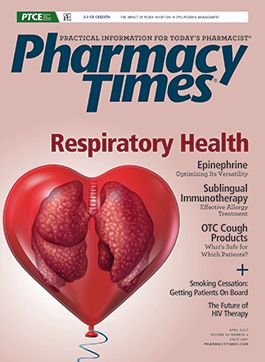Metformin and Organic Cation Transporter Interactions
Metformin has been a first-line oral treatment for patients with type 2 diabetes for 20-plus years.
Metformin has been a first-line oral treatment for patients with type 2 diabetes (T2D) for 20-plus years. It exists as a cation at physiological pH, a state that limits the permeability of metformin through lipid membranes, with the ability to inhibit hepatic glucose production dependent on the drug entering the hepatocytes. Organic cation transporters (OCT1 and OCT3) are active transporters of metformin into the hepatocyte.1 Because T2D is a common problem, patients are likely to be exposed to potential drug—drug interactions with metformin.
Verapamil and Metformin: Reduced Hypoglycemic Effect
Twelve healthy subjects had a 3-hour oral glucose tolerance test (OGTT) while on a standardized diet. They were then administered 1000 mg of metformin at bedtime and 750 mg 10 hours later.2 A second OGTT was administered 2 hours after the second dose of metformin. The subjects then took sustained-release verapamil at 180 mg daily for 5 days, with metformin added for the final 2 days. Glucose tolerance testing was again performed: during administration of verapamil alone and co-administration of verapamil and metformin. Metformin plasma and glucose concentrations from each subject were compared before and during verapamil administration. The use of verapamil did not alter either the pharmacokinetics of metformin or the OGTT response in the absence of metformin. However, verapamil did cause a marked reduction in the maximum glucose-lowering effect of metformin and the total glucose lowering over the 3 hours of the glucose tolerance test.
Based primarily on in vitro studies, verapamil is considered to be an inhibitor of OCT1 and, therefore, would reduce the hepatocyte uptake of metformin, resulting in a reduction in metformin’s efficacy.3 These lessened amounts of metformin entering the hepatocytes could result in a diminished hypoglycemic effect without a change in metformin pharmacokinetics, which would only be maximized by concurrent administration of verapamil and metformin. Under these conditions, the portal vein concentrations of verapamil would be much greater than peripheral plasma concentrations and could exert a greater inhibitory effect on OCT1.
Several other drugs show in vitro OCT1 inhibition but may not reach in vivo concentrations sufficient to produce a clinically significant change in metformin response.3 Although no data are available, separation of verapamil and metformin administration may limit the magnitude of the interaction.
Rifampin and Metformin: Increased Hypoglycemic Effect
Sixteen healthy subjects were studied for how rifampin affects metformin’s ability to control blood sugar levels in a protocol similar to the one described above, except that rifampin 600 mg daily for 10 days was substituted for verapamil and the effects of rifampin were assessed 2 days after the last dose.4 Metformin’s area under the concentration time curve (AUC) increased by an average 13% during concurrent rifampin, but there was no significant change in its half-life following rifampin pretreatment. Metformin effect on plasma glucose was increased by about 40% and 55% for the maximum effect of metformin and the 0-60-minute plasma glucose AUC, respectively.
Due to rifampin’s 3-hour half-life and the 2-day interval after the last dose, the effects observed would not likely be due to rifampin concentration in the plasma. The authors postulated that rifampin may have induced the formation of OCT1, resulting in enhanced hepatic uptake of metformin and increased hypoglycemic response. If this mechanism is correct, separation of the rifampin and metformin doses would not be expected to alter the observed response.
Summary
Although limited data are available, these studies demonstrate the potential for drug transporter interactions to modify object drug response. These results are uncommon in that the inhibitor (verapamil) reduced metformin’s hypoglycemic response while the inducer (rifampin) increased the response. Drugs that modify OCT1 activity may alter metformin’s clinical efficacy; therefore, monitoring glucose concentrations would be prudent.
Drs. Horn and Hansten are both professors of pharmacy at the University of Washington School of Pharmacy. For an electronic version of this article, including references, visit hanstenandhorn.com.
References
- Wagner DJ, Hu T, Wang J. Polyspecific organic cation transporters and their impact on drug intracellular levels and pharmacodynamics. Pharmacol Res. 2016;111:237-246. doi:10.1016/j.phrs.2016.06.002.
- Cho SK, Kim CO, Park ES, Chung JY. Verapamil decreases the glucose-lowering effect of metformin in healthy volunteers. Br J Clin Pharmacol. 2014;78(6):1426-1432. doi: 10.1111/pcp.12476.
- Ahlin G, Chen L, Lazorova L, et al. Genotype-dependent effects of inhibitors of the organic cation transporter, OCT1: predictions of metformin interactions. Pharmacogenomics J. 2011;11(6):400-411. doi. 10.1038/tpj.2010.54.
- Cho SK, Yoon JS, Lee MG, et al. Rifampin enhances the glucose-lowering effect of metformin and increases OCT1 mRNA levels in healthy participants. Clin Pharmacol Ther. 2011;89(3):416-421. doi.:10.1038/cpt.2010.266.

